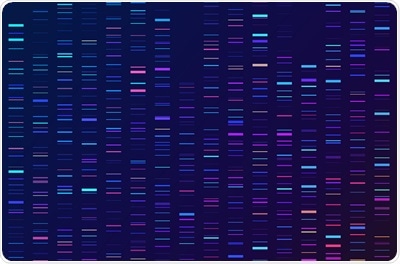Scientists from the University of Pennsylvania School of Medicine (Penn Medicine) have deigned a new targeted method to inhibit a toxicity observed in the sensory neurons of dorsal root ganglia (DRG) following gene therapy to treat neurological diseases.

Image Credit: University of Pennsylvania School of Medicine.
It is a major obstacle to overcome, as the field works toward safer and more effective gene therapies for patients suffering from disorders, like spinal muscular atrophy.
We believe that this new approach could improve safety in gene therapy universally.”
Juliette Hordeaux, DVM, PhD, Study First Author, University of Pennsylvania School of Medicine
Hordeaux is also the senior director of Translational Research in Penn Medicine’s Gene Therapy Program.
The latest findings were recently reported online in the Science Translational Medicine journal.
While the toxicity has not been reported in human beings, research performed on nonhuman primates using adeno-associated viral (AAV) vectors to supply corrected genes intravenously and through the spinal cord fluid have shown problems of axonal degeneration in certain tracts of the peripheral nerves and spinal cord. The cause was eventually traced back to the nDRG—a group of neural cells located on the outside of the spinal cord and are responsible for transmitting sensory messages.
In this study, scientists from Penn Medicine’s’s Gene Therapy Program discovered that this toxicity arise from the overexpression of an introduced gene, called a transgene, in cells found in the DRG. To rectify that, the team altered a transgene with a microRNA target engineered to decrease the degree of the expression of the transgene in the DRG. That modification removed over 80% of the expression of the transgene and decreased the toxicity in primates, reported the researchers.
We believe it is a safe, straightforward way to ameliorate the safety of AAV therapy for the central nervous system. This approach could be used to design other gene therapy vectors to repress transgene expression in the cell types that are affected by the toxicity and not others, which is critical, because you need the expression everywhere else to effectively treat the disorder.”
Juliette Hordeaux, DVM, PhD, Study First Author, University of Pennsylvania School of Medicine
James M. Wilson, MD, PhD, gene transfer expert, director of the Gene Therapy Program, and also a professor of Medicine and Pediatrics in Penn’s Perelman School of Medicine, was the study’s senior author.
After the researchers from Penn Medicine recorded the toxicity of DRG in nonhuman primates, they started to develop a way to resolve it. Although it was asymptomatic in primates, the damage became evident under a close analysis of histopathology in the central nervous system (CNS).
Scientists are aware that damage to the DRG in humans can result in the breakdown of axons that are accountable for sending impulses from nerves to the brain. Many side effects, including weakness and numbness in limbs, follow suit.
The toxicity observed in previous animal studies was sufficient for the U.S. Food and Drug Administration to recently put a partial hold on human trials that treat spinal muscular atrophy by administering a gene therapy vector into the spinal cord. Spinal muscular atrophy is a genetic disorder that severely weakens muscles and causes movement problems.
In the latest study, the team administered vectors both with and without a microRNA target, initially in mice and subsequently in primates. It is the microRNA controls the expression of genes and makes for a perfect target in the cells. The researchers specifically selected microRNA-183, because it is mostly limited to the DRG neurons.
Upon administering unmodified AAV vectors, the new gene was robustly delivered into the target tissue and resulted in toxicity in the DRG neurons. By contrast, vectors with the miRNA target considerably decreased the expression transgene and also the toxicity of DRG neurons, without impacting the transduction elsewhere in the brain of the primate; this was later demonstrated by the histological analyses of the specimens up to 90 days.
At first, it was believed that an immune response was responsible for the toxicity. But the scientists debunked that theory via experiments that demonstrated how steroids and immunosuppressants were ineffective at mitigating the toxicity.
According to the study’s authors, DRG toxicity may occur in all kinds of gene therapies that depend on direct delivery of a vector into the spinal cord fluid or high doses of a vector. The new study paves the way forward to avoid that damage.
We were concerned about the DRG pathology that was observed in most of our NHP studies. This modified vector shows great promise to reduce DRG toxicity and should facilitate the development of safer AAV-based gene therapies for many CNS diseases.”
James M. Wilson, MD, PhD, Gene Transfer Expert and Professor of Medicine and Pediatrics, Perelman School of Medicine, University of Pennsylvania School of Medicine
Source:
Journal reference:
Hordeaux, J., et al. (2020) MicroRNA-mediated inhibition of transgene expression reduces dorsal root ganglion toxicity by AAV vectors in primates. Science Translational Medicine. doi.org/10.1126/scitranslmed.aba9188.